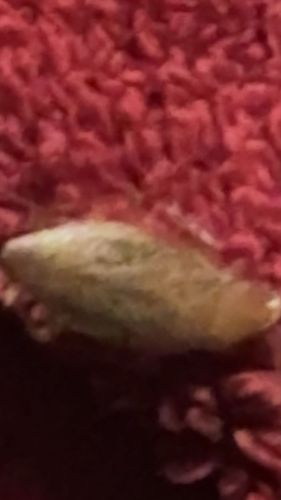Fly (Pupa or Larva)
Scientific Name: Varies widely by species within the order Diptera, e.g., Musca domestica (house fly), Calliphora vomitoria (bluebottle fly). Precise identification is not possible from the image.
Order & Family: Order: Diptera (flies). Family: Difficult to determine precisely from the image, but could be Calliphoridae (blow flies), Muscidae (house flies), or other families with robust, somewhat cylindrical larvae/pupae.
Size: Typically, fly larvae and pupae can range from a few millimeters to several centimeters, depending on the species. This specimen appears to be in the range of 5-15 mm based on the surrounding material.

Natural Habitat
The habitat for fly larvae and pupae is incredibly diverse and depends entirely on the species. It can range from decaying organic matter (compost, rotting fruit, carrion, dung), soil, water, inside plant tissues, or even within other animals (as parasites). Given its appearance, it is likely a terrestrial species associated with decomposition or soil.
Diet & Feeding
As a larva, the diet is highly variable depending on the specific fly species. Many fly larvae are detritivores, feeding on decaying organic matter (e.g., fruit flies, house flies). Others are phytophagous (feeding on plants, e.g., leaf miners), parasitic (e.g., botflies), or predatory (e.g., hoverfly larvae). In its current pupal or late larval stage, it is likely not feeding.
Behavior Patterns
Larvae/pupae are typically sessile, meaning they are largely immobile. They undergo complete metamorphosis. The specific behavior of this individual as a pre-pupal larva or pupa would be limited to wiggling if disturbed, or remaining still as it undergoes transformation. Larvae are known for their voracious appetites.
Risks & Benefits
Risks: Some fly species are vectors for diseases (e.g., house flies transmitting bacteria, mosquitoes transmitting viruses). Larvae of certain species can infest food or living tissues (myiasis). Benefits: Many fly larvae are crucial decomposers, recycling nutrients in ecosystems. Some are important pollinators in their adult stage. Certain species are used in forensic entomology to estimate time of death (e.g., blowflies).
Identified on: 9/2/2025